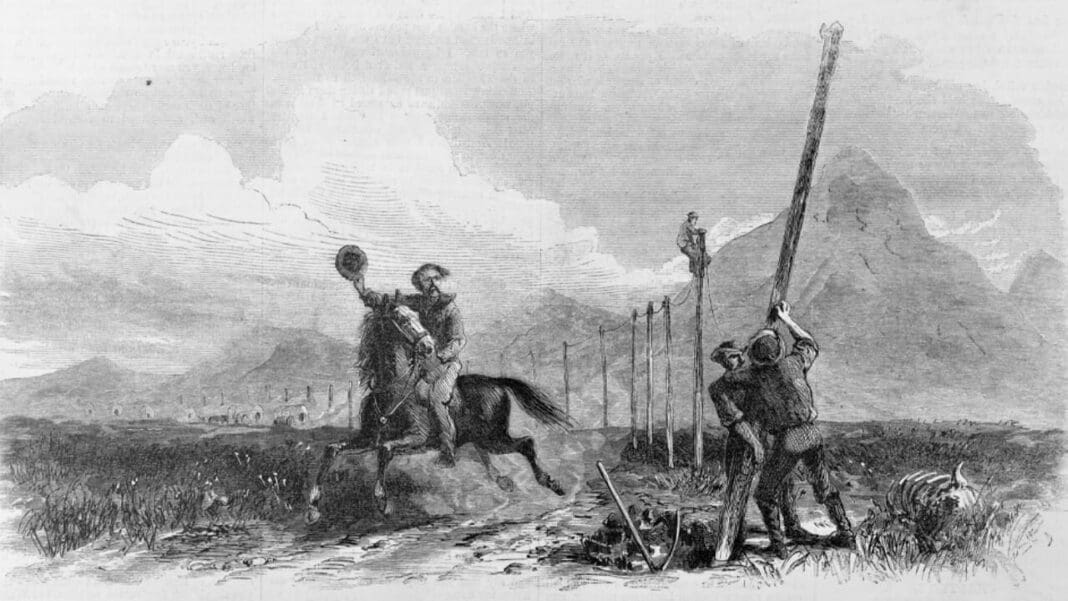As 1825 dawned, the American postal network was still known as the General Post Office — but not for long. By the 1830s, it was renamed the Post Office Department.
The department’s official seal was switched from the Roman god Mercury to an image of a postal worker riding a horse at full gallop.
It was a fitting symbol for a nation on the move.
In 1838, an act of Congress designated all U.S. railroads as postal routes, and low-bid mail transportation contracts known as “star” routes came soon after. As the nation expanded westward, the Pony Express (1860) helped speed letters to the West Coast before the transcontinental railroad was laid.
It was an era of firsts: the first public telegraph service (1845); U.S. postage stamp (1847); branch Post Offices (1847); money orders (1864) and free city delivery (1863).
And in the organization’s work force, it was an era of “first-knowns”: The first known female letter carrier (Sarah Black, Charlestown, MD, 1845); African American postmaster (James W. Mason, Sunnyside, AR, 1869); African American letter carrier (James B. Christian, Richmond, VA, 1869); and African American female postmaster (Anna M. Dumas, Covington, LA, 1872).
By 1872, the Post Office Department played such an important role in establishing and advancing the nation that Congress made it a department of the executive branch.
As the country and the organization gained its footing domestically, it turned its attention beyond its borders, joining with 21 other countries in 1874 to form a global network known today as the Universal Postal Union.
Coming next: Link’s series on the Postal Service’s 250th anniversary will continue soon with a look at events from 1875-1924.



